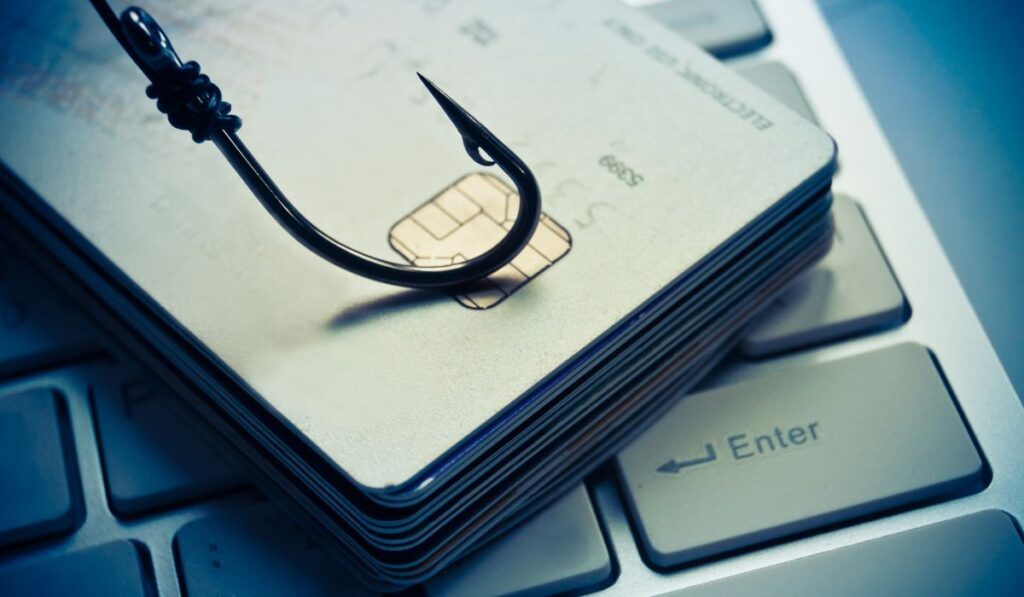Safeguard Your Data: Shield Against Clone Phishing with Pillar Support

Clone phishing is a type of cyber threat that involves creating replica or cloned versions of legitimate emails, websites, or documents to deceive victims and steal sensitive information. In clone phishing attacks, fraudsters mimic trusted sources, such as reputable companies or individuals, in an attempt to trick recipients into providing personal data, login credentials, or financial details.
This article aims to provide insights into clone phishing, its techniques, and the potential risks associated with such attacks. It will also discuss strategies for identifying clone phishing attempts and implementing effective safeguards to protect against them. By understanding the intricacies of clone phishing and taking proactive measures, individuals and organizations can fortify their defenses and reduce the risk of falling victim to these malicious schemes.
Table of Contents
What is Clone Phishing?
Clone phishing is a deceptive tactic employed by cybercriminals to trick individuals into disclosing sensitive information or performing certain actions. In clone phishing, attackers create replicas or clones of legitimate emails, websites, or documents, making them appear almost identical to the original ones. By closely mimicking trusted sources, such as well-known companies, financial institutions, or even individuals, attackers aim to deceive recipients into believing that the cloned communication is genuine and trustworthy.
To create convincing clones, attackers replicate the content, formatting, and visual elements of the original email or website. They may also make slight modifications, such as altering the sender’s name or email address, to further enhance the deception. The goal is to make the clone appear authentic and legitimate, leading the recipient to unknowingly disclose sensitive information or perform actions that benefit the attacker.
Clone phishing is closely related to CEO fraud, as it is commonly used as a tactic to perpetrate CEO fraud attacks. In CEO fraud, attackers clone the email account of a high-ranking executive and use it to send fraudulent requests, often related to financial transactions or sensitive data. By exploiting the authority and trust associated with the cloned executive’s identity, the attackers aim to deceive employees into complying with their fraudulent demands.
It is important to remain vigilant and skeptical when interacting with emails, websites, or documents, especially those requesting sensitive information or unusual actions. By being aware of clone phishing techniques and closely examining the authenticity of communication, individuals and organizations can better protect themselves against these deceptive attacks.
How Clone Phishing Works
Clone phishing typically involves the following steps:
- Email Interception: The attacker intercepts a legitimate email sent from a trusted source, such as a company or individual.
- Cloning the Email: The attacker creates a clone or replica of the intercepted email, copying the content, formatting, and visual elements. They may make slight modifications to deceive recipients further.
- Impersonation of Trusted Entities: The cloned email is sent to the targeted individuals, appearing as if it originates from the trusted source or entity. The attacker may use a similar email address or domain name to increase the authenticity of the clone.
- Social Engineering Techniques: The cloned email often contains a sense of urgency, a request for immediate action, or an enticing offer. These psychological triggers are designed to manipulate and prompt the recipients into taking the desired actions.
- Payload Delivery: The cloned email may contain malicious links, attachments, or embedded scripts. These payloads are intended to exploit vulnerabilities in the recipient’s system or trick them into revealing sensitive information.
- Victim’s Response: If the recipient falls for the deception and interacts with the clone, they may unknowingly provide sensitive information, perform a financial transaction, or download malware onto their device.
The success of clone phishing relies heavily on the attacker’s ability to convincingly clone the original email and exploit psychological triggers. By impersonating trusted entities and creating a sense of urgency or an enticing opportunity, attackers aim to overcome the recipient’s suspicion and prompt them to take actions that benefit the attacker. It is crucial for individuals and organizations to exercise caution and verify the authenticity of any suspicious emails or requests to protect themselves from clone phishing attacks.
Recognizing Clone Phishing Attempts

Recognizing clone phishing attempts requires careful attention to detail and scrutiny. Here are some key indicators to identify clone phishing:
- Email Discrepancies: Pay attention to any inconsistencies or discrepancies in the email content, including spelling and grammar errors, unusual language, or formatting issues. Legitimate organizations usually have strict quality control in their communication.
- Suspicious URLs: Examine the URLs included in the email or website carefully. Clone phishing attempts may use URLs that are slightly different from the legitimate ones. Look for misspellings, additional characters, or subtle changes in the domain name.
- Email Sender Details: Review the email sender’s details, such as the email address and domain name. Check for any inconsistencies or variations from the official email addresses used by the legitimate organization. Attackers often use similar-looking addresses to deceive recipients.
- Content and Design Elements: Compare the content and design elements of suspicious emails or websites with those of legitimate sources. Look for any noticeable differences in the layout, branding, logos, or formatting. Pay attention to details such as font styles and colors, as attackers may attempt to mimic the original design.
- Trust Your Instincts: If something about the email feels off or seems ever so slightly strange, trust your instincts and exercise caution. Take the time to independently verify the authenticity of the email or website through official channels or by contacting the organization directly.
By being vigilant and attentive to these indicators, individuals and organizations can improve their ability to recognize clone phishing attempts and protect themselves from falling victim to such attacks.
Preventing Clone Phishing Attacks
Preventing clone phishing attacks requires proactive measures and user awareness. Here are some best practices to help protect against clone phishing:
Maintain a Strong Cybersecurity Posture
Keep all software, including operating systems, applications, and security tools, up to date with the latest patches and updates. Regularly review and strengthen security configurations on devices and networks.
Educate Users
Provide training and awareness programs to educate users about clone phishing and how to identify suspicious emails, URLs, and attachments. Teach them about the importance of verifying authenticity and reporting potential phishing attempts.
Implement Multi-Factor Authentication (MFA)
Enable MFA for all accounts and systems that support it. MFA adds an extra layer of security by requiring users to provide additional verification, such as a unique code or biometric data, along with their login credentials.
Robust Email Filtering
Implement advanced email filtering systems that can identify and block suspicious emails, including clone phishing attempts. Use anti-spam and anti-phishing technologies to detect and prevent such attacks.
Cautious Clicking and Verification
Encourage users to exercise caution when clicking on links or downloading attachments. Advise them to independently verify the authenticity of emails or websites by directly contacting the organization through trusted channels, such as official phone numbers or verified email addresses.
Regular Security Audits
Conduct regular security audits and vulnerability assessments to identify and address any weaknesses in the system. This helps to proactively detect and mitigate potential security risks.
By following these preventive measures and promoting a culture of cybersecurity awareness, individuals and organizations can significantly reduce the risk of falling victim to clone phishing attacks and protect their sensitive information and assets.
Responding to Clone Phishing Incidents
When a potential clone phishing attack is detected, it is important to respond promptly and effectively to mitigate any potential damage. Here are the immediate steps to take:
- Isolate Affected Systems: Disconnect any compromised systems from the network to prevent further unauthorized access. This helps contain the impact of the attack and prevents the spread of malware or unauthorized activities.
- Change Passwords and Credentials: Immediately change the passwords for any accounts that may have been compromised. This includes email accounts, online banking, social media, and other critical accounts. Additionally, revoke any compromised credentials or access privileges to prevent unauthorized access.
- Report Incidents: Report the clone phishing incident to appropriate authorities, such as your organization’s IT department, security team, or incident response team. They can initiate an investigation and take further steps to address the incident. Additionally, report the incident to relevant parties, such as the organization or individual being impersonated, to alert them of the potential threat.
- Notify Users and Employees: Inform users or employees about the clone phishing incident and provide guidance on how to identify and avoid such attacks in the future. Remind them to exercise caution and report any suspicious emails or websites.
- Conduct Post-Incident Analysis: Perform a thorough analysis of the clone phishing incident to understand how it occurred and identify any vulnerabilities or gaps in security controls. Use this information to strengthen security measures and implement necessary improvements to prevent similar attacks in the future.
- Enhance Security Measures: Based on the post-incident analysis, implement additional security measures to enhance protection against clone phishing attacks. This may include updating security software, implementing stricter email filtering and authentication protocols, and enhancing user awareness and training programs.
By taking these immediate steps and implementing a comprehensive incident response plan, organizations can effectively respond to clone phishing incidents, mitigate the impact, and prevent future attacks. Regularly reviewing and updating security measures is crucial to stay ahead of evolving cyber threats.
Pillar Support: Enhancing Defense Against Clone Phishing
Pillar Support is dedicated to providing robust cybersecurity solutions and expertise to help organizations strengthen their defense against clone phishing attacks. Our services are tailored to address the unique challenges posed by these deceptive tactics, ensuring that our clients are well-prepared to detect and mitigate clone phishing threats.
Our team of cybersecurity professionals is experienced in identifying the indicators of clone phishing and implementing effective countermeasures. We offer comprehensive solutions that encompass advanced email filtering systems, multi-factor authentication, and employee education and awareness programs.
With our expertise, we can help organizations enhance their security posture and protect against clone phishing attacks. We understand the evolving nature of cyber threats and continuously update our solutions to stay ahead of emerging attack techniques.
In addition to our technical solutions, we provide fraud awareness training to educate employees about the risks associated with clone phishing. By empowering individuals with knowledge and best practices, we help create a strong human firewall against these types of attacks.
At Pillar Support, we are committed to delivering reliable and effective cybersecurity services to safeguard your organization’s sensitive information and maintain business continuity. Contact us to learn more about our tailored solutions and how we can assist you in enhancing your defense against clone phishing attacks.
Frequently Asked Questions
What Is an Example of a Clone Phishing Attack?
An example of a clone phishing attack is when an attacker creates an exact replica of a legitimate website, such as a banking or social media site, and tricks users into entering their login credentials or personal information on the fake website.
What Is the Difference Between Clone Phishing and Spear Phishing?
Clone phishing and spear phishing are both forms of targeted phishing attacks. The main difference is that clone phishing involves creating replicas of legitimate emails or websites, while spear phishing focuses on personalized and highly targeted messages to deceive individuals or organizations.
Why Is Clone Phishing Effective?
Clone phishing is effective because it capitalizes on the trust users have in familiar email senders or websites. By replicating legitimate sources, attackers can deceive users into thinking that the cloned content is genuine, increasing the likelihood of victims falling for the scam and disclosing sensitive information.
What Does “Clone” Mean in Cybersecurity?
In the context of cybersecurity, “clone” refers to the replication or imitation of legitimate emails, websites, or other digital content with the intention to deceive users. Clone phishing specifically refers to the creation of cloned emails or websites to trick individuals into sharing sensitive information or performing certain actions.